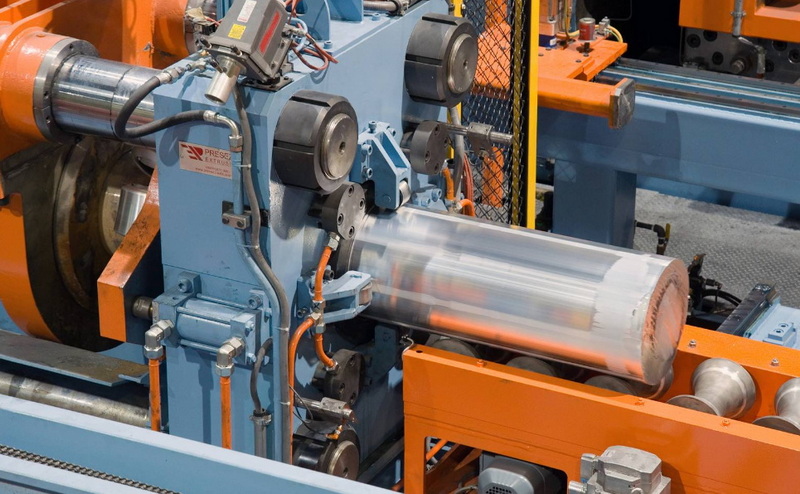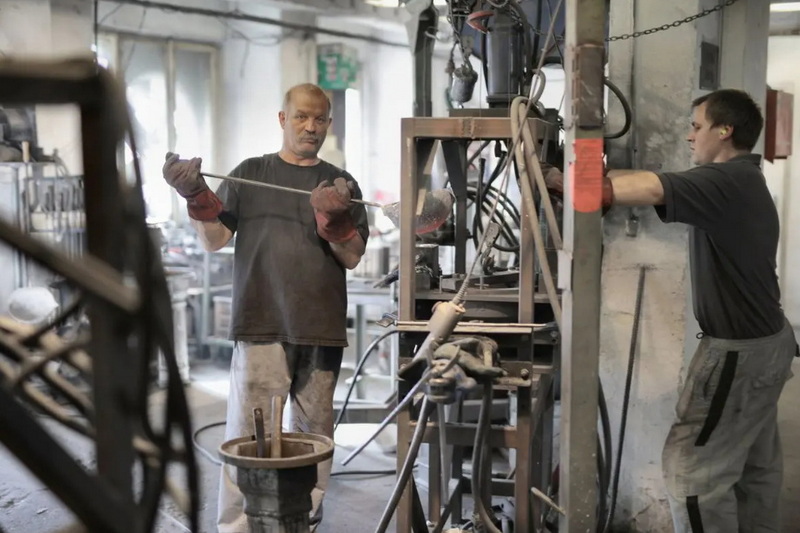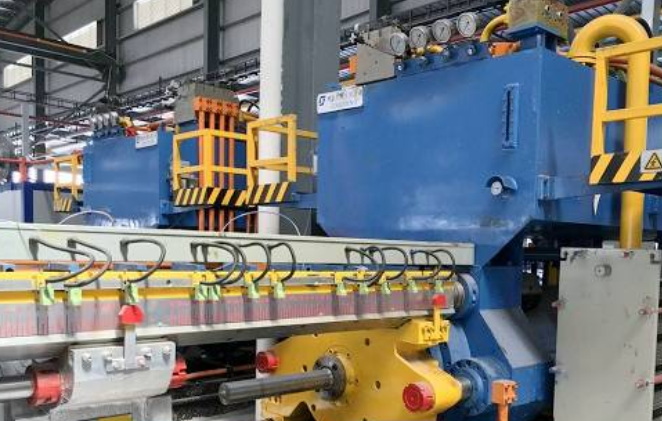Content Menu
● Understanding the Aluminum Extrusion Process
● Safety Precautions Around the Platen
>> Personal Protective Equipment (PPE)
>> Machine Safety Features
>> Training and Awareness
>> Housekeeping and Maintenance
● Risks Associated with Aluminum Extrusion Presses
● The Importance of Never Looking into the Platen
● Best Practices for Safe Operation
>> Regular Safety Audits
>> Incident Reporting System
>> Safety Signage
>> Team Safety Meetings
● Emergency Preparedness
● Conclusion
● FAQs
>> 1. What types of PPE should be worn when operating an aluminum extrusion press?
>> 2. Why is it important never to look into the platen?
>> 3. What are common injuries associated with aluminum extrusion presses?
>> 4. How often should maintenance checks be performed on an aluminum extrusion press?
>> 5. What should be included in an emergency response plan?
● Citations:
Aluminum extrusion is a widely used manufacturing process that involves forcing aluminum through a shaped die to create various profiles. While this process is efficient, it poses significant safety risks, particularly around the platen of an aluminum extrusion press. This article aims to provide comprehensive guidelines on how to stay safe around the platen of an aluminum extrusion press, emphasizing the critical phrase: never look into the platen on an aluminum extrusion press.

Understanding the Aluminum Extrusion Process
The aluminum extrusion process involves several key steps:
1. Preheating the Aluminum Billet: The aluminum is heated to a specific temperature to make it malleable.
2. Loading the Billet: The heated billet is placed into the extrusion press.
3. Extrusion: Pressure is applied to force the aluminum through the die.
4. Cooling: The extruded profile is cooled to maintain its shape.
5. Cutting: The extruded material is cut into desired lengths.
Understanding these steps is crucial for recognizing potential hazards associated with each phase.
Safety Precautions Around the Platen
Personal Protective Equipment (PPE)
Wearing appropriate PPE is essential for ensuring safety in aluminum extrusion operations. Key items include:
- Safety Goggles or Glasses: Protects eyes from flying debris and molten aluminum splashes.
- Cut-Resistant Gloves: Shields hands from sharp edges and hot surfaces.
- Heat-Resistant Clothing: Prevents burns from hot materials and protects against sparks.
- Steel-Toed Boots: Protects feet from heavy objects and potential crush injuries.
- Hearing Protection: Reduces noise exposure in high-decibel environments commonly found in manufacturing settings.
Machine Safety Features
Aluminum extrusion presses are equipped with various safety features designed to protect operators:
- Safety Guards: These should cover all moving parts to prevent accidental contact, particularly around the platen area.
- Emergency Stop Buttons: Easily accessible buttons that halt operations immediately in case of an emergency, allowing for quick response to dangerous situations.
- Lockout/Tagout Procedures: Essential for maintenance work, ensuring that machines cannot be accidentally started while being serviced. This procedure includes placing locks on power sources and tagging them to indicate maintenance work is ongoing.
Training and Awareness
Proper training is vital for all personnel involved in aluminum extrusion operations. Training should cover:
- Safe operating procedures for the extrusion press, including how to handle emergencies.
- Emergency response protocols, including evacuation routes and first aid procedures.
- Recognition of potential hazards, including the dangers of looking into the platen.
Regular refresher courses can help keep safety protocols fresh in employees' minds and ensure compliance with safety regulations.
Housekeeping and Maintenance
Maintaining a clean work environment minimizes risks associated with slips, trips, and falls. Regular maintenance checks should include:
- Inspecting safety guards and emergency systems for functionality.
- Ensuring that all equipment is operating correctly and safely.
- Keeping work areas free of debris, spills, and clutter to prevent accidents.

Risks Associated with Aluminum Extrusion Presses
Several hazards are inherent in aluminum extrusion processes:
1. High Temperatures: Operators may encounter burns from hot surfaces or materials. The heating process can raise temperatures significantly, requiring caution when handling materials.
2. Heavy Machinery: Crush injuries can occur from moving parts or equipment malfunctioning. Operators must be aware of their surroundings at all times.
3. Hydraulic Risks: Hydraulic systems can fail or leak, leading to dangerous situations if not properly maintained or monitored.
4. Chemical Exposure: Fumes from heating processes may pose respiratory risks, especially if proper ventilation systems are not in place.
The Importance of Never Looking into the Platen
One critical rule in operating an aluminum extrusion press is to never look into the platen on an aluminum extrusion press. This area can be extremely dangerous due to:
- High-pressure operations that can cause materials to eject unexpectedly, posing a risk of serious injury or even fatal accidents.
- Potential for flying debris when machinery malfunctions or during die changes. Operators should always maintain a safe distance and use appropriate tools for inspection rather than peering directly into the platen.
To reinforce this message, companies should implement strict policies prohibiting any action that involves looking directly into the platen during operation or maintenance.
Best Practices for Safe Operation
To create a culture of safety around aluminum extrusion presses, consider implementing these best practices:
Regular Safety Audits
Conduct regular safety audits to identify potential hazards and ensure compliance with safety protocols. These audits should involve checking equipment functionality, reviewing PPE usage, and assessing employee adherence to safety guidelines.
Incident Reporting System
Establish a clear incident reporting system that encourages employees to report near misses and unsafe conditions without fear of retribution. Analyzing these reports can help identify trends and areas for improvement in safety practices.
Safety Signage
Use clear signage throughout the facility to remind employees of safety protocols, especially near hazardous areas such as the platen of an aluminum extrusion press. Signs should include warnings about not looking into the platen and reminders about wearing PPE.
Team Safety Meetings
Hold regular team meetings focused on safety topics related to aluminum extrusion operations. These meetings can serve as a platform for discussing recent incidents, sharing best practices, and reinforcing the importance of safety measures like never looking into the platen.
Emergency Preparedness
Being prepared for emergencies can significantly reduce injury severity:
1. Know Emergency Exits: Familiarize yourself with evacuation routes and emergency exits in your facility, ensuring they are clearly marked and unobstructed at all times.
2. Fire Safety Equipment: Ensure that fire extinguishers and first aid kits are easily accessible and regularly checked for functionality and expiration dates.
3. Emergency Response Plan: Have a clear plan in place for responding to accidents or equipment failures, including designated roles for team members during emergencies.
Conclusion
Staying safe around the platen of an aluminum extrusion press requires vigilance, proper training, and adherence to safety protocols. By wearing appropriate PPE, understanding machine safety features, maintaining a clean workspace, following established procedures—especially the crucial guideline of never looking into the platen—operators can significantly reduce their risk of injury.
Creating a culture of safety within your organization not only protects employees but also enhances productivity by minimizing downtime due to accidents or injuries. Remember that proactive measures are always more effective than reactive responses when it comes to workplace safety.

FAQs
1. What types of PPE should be worn when operating an aluminum extrusion press?
Operators should wear safety goggles, cut-resistant gloves, heat-resistant clothing, steel-toed boots, and hearing protection.
2. Why is it important never to look into the platen?
Looking into the platen can expose operators to high-pressure ejections of materials and flying debris, posing serious injury risks.
3. What are common injuries associated with aluminum extrusion presses?
Common injuries include burns from hot materials, cuts from sharp edges, crush injuries from machinery parts, and musculoskeletal disorders from improper lifting techniques.
4. How often should maintenance checks be performed on an aluminum extrusion press?
Maintenance checks should typically occur at least quarterly or based on manufacturer recommendations or operational hours.
5. What should be included in an emergency response plan?
An emergency response plan should include evacuation routes, locations of fire extinguishers and first aid kits, and procedures for activating emergency stop mechanisms.
Citations:
[1] https://www.outashi.com/blog/safety-precautions-in-operating-aluminum-extrusion-machine-id35.html
[2] https://www.yjing-extrusion.com/how-to-ensure-employee-safety-in-aluminum-extrusion-press-operations.html
[3] https://bonnellaluminum.com/tech-info-resources/aluminum-extrusion-process/
[4] https://www.linkedin.com/pulse/four-precautions-aluminum-extrusion-machine-operators-when-operating
[5] https://www.yjing-extrusion.com/what-are-the-key-safety-measures-for-alco-aluminum-extrusion-press.html
[6] https://www.extrusion.net
[7] https://www.chaluminium.com/what-are-the-safety-considerations-for-working-with-aluminum-multi-port-extrusions
[8] https://blog.knottsco.com/blog/bid/44509/Machine-Guarding-Aluminum-Extrusion-is-Serious-for-Plant-Safety






















